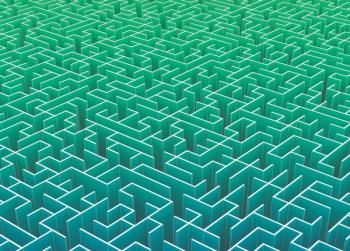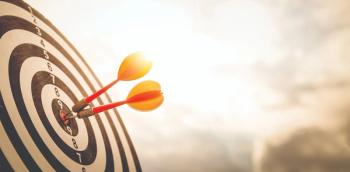
- Ophthalmology Times Europe July/August 2025
- Volume 21
- Issue 4
- Pages: 32 - 34
Recap: The future of imaging is out of this world
Highlights from the 2025 Heidelberg Engineering International SPECTRALIS Symposium—And Beyond
From 13-14 June 2025, Heidelberg Engineering welcomed clinicians to its eponymous hometown of Heidelberg, Germany, and its brand new campus, for the
As part of the scientific programme, presenters shared 35 lectures across seven topics, all helmed by course director Frank Holz, MD, FEBO, FARVO, professor and chair of the Department of Ophthalmology at University of Bonn, Germany. The keynote presentation was delivered by Warren Hoburg and Tyson Brunstetter, OD, PhD, both US-based team members of the National Aeronautics and Space Administration (NASA).
Astronaut Hoburg and Dr Brunstetter spoke about the current status and near future of remote imaging. To illustrate, they described their use of optical coherence tomography (OCT) and similar technologies in space flight.
FLIO in focus
Certain imaging modalities generated significant interest during the ISS, among attendees in Heidelberg and those following along with Ophthalmology Times Europe’s coverage online. A novel imaging technology, fluorescence lifetime imaging ophthalmoscopy (FLIO), was particularly popular, thanks to multiple symposia during the congress which placed the topic at the forefront.
Existing imaging modalities have long demonstrated correlation to systemic health markers, said Dr Lee, and FLIO could help clinicians make better use of the data they collect. “We hoped by systematically collecting a large cross-sectional dataset of FLIO data, we could provide a research resource to the larger community as well as unlock new associations from the retina to the rest of the body,” he continued.
During the ISS, Dr Lee shared findings from the Artificial Intelligence Ready and Equitable Atlas for Diabetes Insights (AI-READI) project. As Dr Lee and his colleagues work to implement FLIO-derived data into the project, they continue to seek out novel patterns which could improve understanding of diabetic eye disease.
“[Our team] showed that there was a dose-dependent relationship between some of the blood test markers and the FLIO signal from the central subfield of the macula in the AI-READI dataset,” he said. “This is very preliminary but also very exciting to see because it could indicate that there are latent associations in the fluorescence lifetimes that are directly associated with systemic health markers.”
Robert C. Sergott, MD, of Wills Eye Hospital in Philadelphia, Pennsylvania, also discussed FLIO, highlighting its potential to improve diagnostic and prognostic capabilities for patients with ocular and non-ocular pathologies. FLIO can be used to detect patterns in mitochondrial dysfunction and protein misfolding, which could help
Dr Sergott said that FLIO can “make the invisible visible,” providing clinicians the much-needed time to address neurodegeneration before patients experience symptoms. Because FLIO is non-invasive and takes little time—around 10 minutes per eye, Dr Sergott said—it shows tremendous promise in expediting patient care. “The retina is part of the brain,” Dr Sergott said. “They are linked.”
Rethinking what the eye can do
An expansive attitude toward ocular imaging characterised much of the congress. Just as Dr Sergott described the ways FLIO can extend ocular imaging into the brain, other speakers at the ISS shared the latest advances in their own areas of oculomics.
Neeraj Dhaun, MD, PhD, better known to his patients and colleagues as Bean, is a professor of nephrology at the University of Edinburgh; an honorary consultant nephrologist at the Royal Infirmary of Edinburgh; and director of the Edinburgh Clinical Research Facility. He is also a senior fellow, INSERM and Université Paris-Descartes and the PARis Cardiovascular Centre, France.
Though
“Additionally, there is now a wealth of ocular imaging data including from OCT scans as these are now readily available in opticians worldwide,” Prof Dhaun continued. “By combining deep machine learning with retinal images, researchers have shown the eye can accurately predict an individual’s risk of developing a number of systemic diseases, including heart attack, heart failure and stroke. In terms of ’new horizons’, I would be very keen to see how newer ultrahigh resolution OCT imaging devices can help us define systemic disease even earlier in their trajectory.”
Even when keeping the focus strictly on the eye, new technologies promise to revolutionise how ocular imaging is approached. Case in point: holographic OCT, or HOLO-OCT, is exactly as futuristic as it sounds, according to Gereon Hüttmann, PhD. Prof Hüttmann is deputy head of the Institute of Biomedical Optics, University of Lübeck, Germany. He closed the new technology session at ISS with his presentation.
Traditional OCT has a few limitations, and uses the phase of scattered light only for obtaining depth information when recording cross-sectional images. Eye motion and instabilities of the scan make it challenging to use the phase for other purposes, he said. “In contrast,
Rayaz Malik, MBChB, PhD, a professor of medicine at Weill Cornell Medicine - Qatar, also highlighted a new sphere of advancement in ocular imaging. He described the cornea as an often-overlooked and particularly
“The fact that the cornea is transparent, that light has to go through the cornea to get to the back of the eye—we’ve kind of ignored that [ in other imaging techniques],” he said. “But
Transmission from outer space
Tyson J. Brunstetter, MBA, OD, PhD, FAAO, FAsMA, was one of the keynote speakers at the ISS. Dr Brunstetter is a US Navy aerospace optometrist at the NASA Johnson Space Center in Houston, Texas. There, he serves as the clinical lead for
Dr Laurie provided additional context for the role OCT and other imaging technologies play in studying SANS.“Over the last 10+ years
Dr Brunstetter said that he hoped demonstrations of OCT use during spaceflight can inspire clinicians to challenge themselves in their own earthbound practices. “I think one of the takeaways from our lecture will be thinking outside the box, just changing your mind, shifting your mind, in a way,” Dr Brunstetter said. “In every session that is on the programme, we [were] shifting gears in our mind…Think of these challenges from different perspectives, and hopefully together, we can, we can start coming up with some solutions.”
Articles in this issue
5 months ago
Keys to optimising phaco efficiencyNewsletter
Get the essential updates shaping the future of pharma manufacturing and compliance—subscribe today to Pharmaceutical Technology and never miss a breakthrough.












































